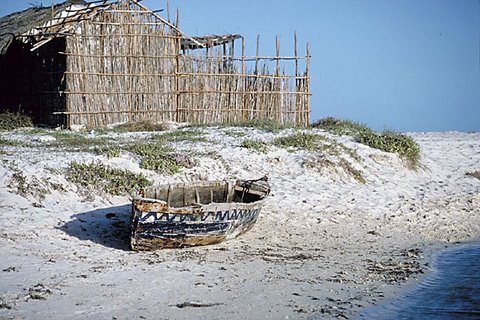
Ngumi lsland.-This island is close to Koyama, its greatest length being 41 miles and breadth 1 mile. It is uninhabited save by two or three fishermen. Water is obtained from Koyama. The island possesses considerable ruins of a walled-in village. In about 1500-1600 the island was bombarded and destroite by Portoguese navy it is of no interest save with reference to the legend associated with the mosque. The inhabitants traded in ivory and slaves with a white race: the tusks were packed in the long matting-bags used for grain. On one occasion a cargo was taken, but the bags contained but one tusk each and were packed with camel and other bones. The traders sailed, and on their return bombarded the village, destroying all the inhabitants. One woman ran for sanctuary to the mosque, praying that she might be saved from the raiders; her answer was her transformation into stone. The stone has now disappeared, but is stated to have stood near the Kibla : it has been reported as still existent, but its whereabouts kept secret. From this legend Astarte worship has been argued, somewhat unwarranta bly. Men desirous of children burn incense before the ruined shrine. The Bajuns are unwilling to clean the old stone wells in that each well demands a life